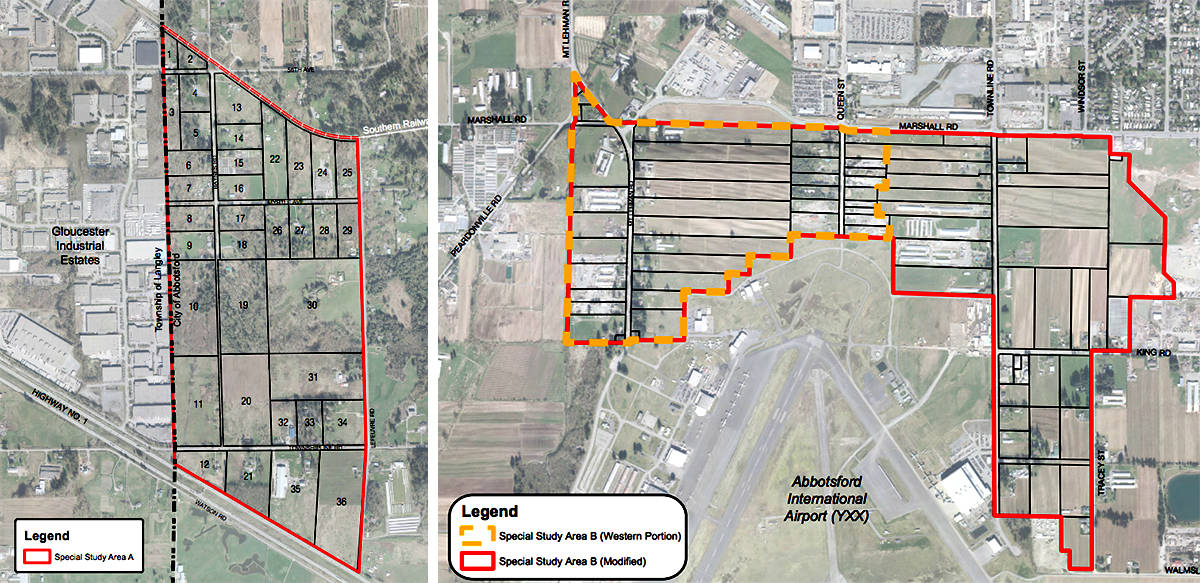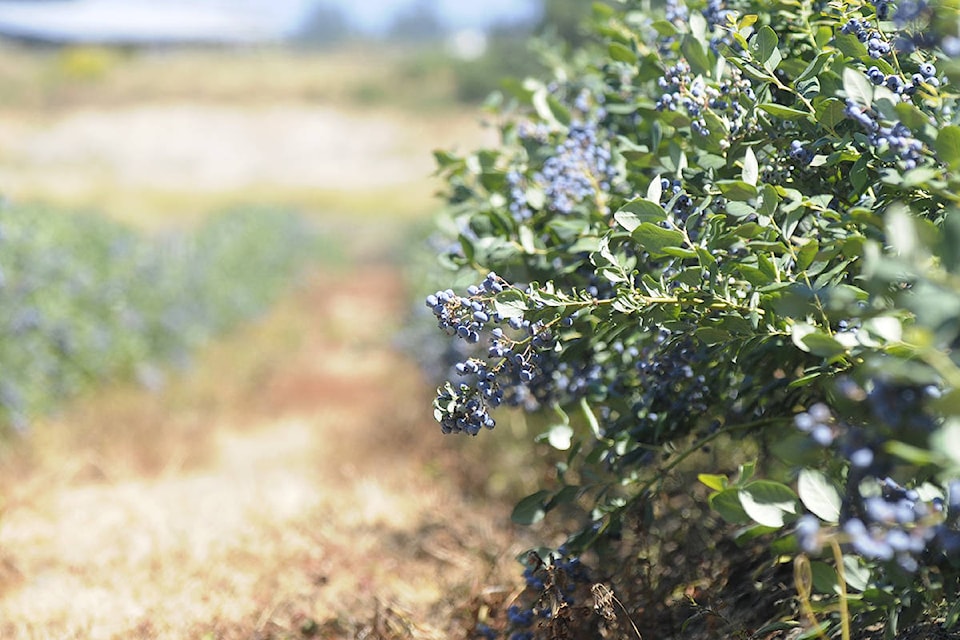Abbotsford’s need for more industrial land and jobs over the coming decades trumps the status quo on farmland in west Bradner and north of the airport.
That was the message from council Monday evening as it voted to send an exclusion application to the Agricultural Land Commission (ALC).
The city will now ask the ALC to exclude around 500 acres of land from the Agricultural Land Reserve, after council voted 8-1 in favour of a modified version of the plan, with only Coun. Patricia Ross opposed.
The properties are located in two blocks: one is in Bradner on middling soil, just north of Highway 1 and adjacent to the Gloucester Estates industrial park in Langley; the other comprises the westernmost properties to the north of YXX on decent soil. Staff had originally included around 200 acres of land with high-quality soil along the northeast and eastern edges of the airport in the proposal, but council chose not to include those parcels in the final application, citing their agricultural value.
Monday’s vote marked a key point in a process launched by last year’s Official Community Plan and continued early this year with a report that showed the city and region was running out of industrial land.
A public hearing two weeks ago saw more than 50 people speak over the course of four-plus hours. Around three-quarters of those were opposed to the plans, with Bradner residents among the most vocal and plentiful.
Mayor Henry Braun and those councillors who voted for the proposal acknowledged the opposition by many in Bradner, but said there was an overriding need to provide jobs for residents close to home and adapt to a changing world.
Locals, Braun acknowledged, “will have some disruptions in their lives, there’s no question about that.” But he said council needed to make its decision in “the best long-term interest of this city going forward.” He also suggested the city look at ensuring amenity agreements to improve the area for local residents accompany any development.
Braun and Coun. Dave Loewen both referred to the necessity to manage the inevitable change that communities face.
“Notwithstanding the genuine concern by some about loss of agricultural land, significant opposition in this matter was based on preservation of a way of life, the status quo,” Loewen said. “So while I appreciate the passionate love that Bradner residents have for their neighbourhood, I also appreciate that there exists a large populace outside their immediate community whose interests are no less important.”
Coun. Sandy Blue said it was clear the city needed more industrial land for jobs and to bolster the tax base. She also said the exclusion of the properties in the Bradner area won’t destroy that community as some residents warned.
“I firmly believe it is possible for us to maintain the distinctive character and rural lifestyle these neighbours spoke of and coexist with the industrial uses outlined in the Industrial Lands report,” she said.
Blue and several other councillors said agriculture around Abbotsford will be improved by advances in farming technology. And they cited the city’s AgRefresh initiative, which is working to develop a strategy to target the hundreds of property owners who aren’t complying with ALR rules. Moving industrial activities currently operating on agricultural land could significantly improve local farming, Blue noted.
In addition to the need for jobs, Couns. Moe Gill and Brenda Falk both referred to the need for industries that also support agriculture. And Falk and Coun. Ross Siemens said more industrial land in Abbotsford will help increase the city’s self-sufficiency and sustainability.
The lone vote against the plan was cast by Coun. Patricia Ross, who said she had come to doubt the key premise behind the plan: that more industrial land will provide much-needed jobs for years to come.
Ross said job growth will be strongest in sectors that often aren’t located on industrial land, including health care, information, technology and the service sector. She said the city should have first undertaken a job growth study, although she absolved staff of blame, noting that she herself had not previously asked for such a report.
“We need to talk about how the modern economy will relate to land use, factoring in food security.” Removing the land from the ALR, she said, “hasn’t been proved to me it’s necessary to create the jobs.
“Everything I’ve researched so far shows industry is rapidly becoming technologically advanced and that there will be fewer jobs there and it isn’t even where the jobs will be in the future.”
Monday’s vote won’t change anything by itself, however. Staff will now develop an application that, with council’s future approval, will be sent to the Agricultural Land Commission, which will rule on whether the properties can be excluded from the ALR. For the plan to receive a thumbs up, the city must convince the ALC that its proposal won’t hurt agriculture in the city, and that it will sufficiently protect the environment.
If the ALC grants the exclusion, the city will still need to approve the rezoning of the properties before anything can be built on them. Through that process, the city can define how the properties can be used and what activities can occur on the land.

